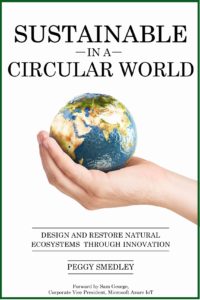The infrastructure we depend upon is aging—the interstate highway system started in the 1950s and much of it was already in place as federal and state highways, renovated and expanded. Bridges are crumbling, electrical towers are rusting or pitting, and tunnels are outmoded as trains have gotten taller and longer. With government funds becoming available, slowly, from the IIJA (Infrastructure Investment and Jobs Act), work is beginning on repairing and replacing some of the structures that carry the loads—and the IoT (Internet of Things) is playing a critical role.
According to the American Road & Transportation Builders Assn., 36% of U.S. bridges—nearly 224,000 spans—need repair work and 78,800 bridges should be replaced. More than 43,500 bridges are rated in poor condition and classified as “structurally deficient.” Motorists cross these structures 167.5 million times a day. At the current pace, it would take nearly 30 years to repair them all. New federal investment under the IIJA will provide additional resources for state highway programs over the next five years, plus two new programs just for bridge repair.
Federal law requires most bridges in the United States be regularly inspected by the state departments of transportation for functionality and structural condition. The states report this information—and much more—on each bridge under their jurisdiction to the U.S. DOT (U.S. Dept. Transportation) for inclusion in the NBI (national bridge inventory).
The government classifies a bridge as “structurally deficient” if any one of the following bridge components are rated less than or equal to 4 (in poor or worse condition):
- Deck condition
- Superstructure condition
- Substructure condition
- Culvert condition
The U.S. DOT’s FHWA (Federal Highway Admin.) uses four factors in determining the “sufficiency rating” of a bridge, which is its sufficiency to remain in service. Each bridge is assigned a numerical percentage rating between zero and 100, with 100 being the ideal.
Effective Jan. 1, 2018, FHWA changed the definition of structurally deficient as part of the final rule on highway and bridge performance measures. Two measures that were previously used to classify bridges as structurally deficient are no longer used. This includes bridges where the overall structural evaluation was rated in poor or worse condition, or with insufficient waterway openings. The new definition limits the classification to bridges where one of the key structural elements—the deck, superstructure, substructure, or culverts—are rated in poor or worse condition.
State and local governments are increasingly eager to address the escalating maintenance needs of that aging and critical infrastructure, including mines, dams, and older buildings, as well as highways and bridges. Safety concerns, amplified by disastrous incidents like the 2018 Morandi Bridge collapse, which resulted in more than 40 casualties and $450 million in damages, have created a preference for predictive maintenance over maintenance after failure approaches.
The surge in extreme weather events linked to climate change has also laid bare additional vulnerabilities in aging and strained post-war infrastructure. The greater variety of IoT sensor hardware has made it much easier for asset owners to integrate sensors into their operations, shifting away from expensive and bulky implementations to lower cost and easy-to-install solutions. In addition, more advanced data analytics software platforms are enabling the SHM (structural health monitoring) market to expand. According to ABI Research, SHM sensors will reach 22.9 million connections by 2030, with a CAGR (compound annual growth rate) of 18% for wired retrofitted sensors and 28% for wireless retrofitted sensors.
Innovation is happening on two fronts in the SHM market. First, it is happening on the hardware edge with a shift to smaller data loggers and data acquisition systems, greater edge processing capabilities, and a more extensive variety of sensors and technologies.
Second, it is happening with the software. Many companies seek an analytics platform, often compatible with other third-party sensors. Vendors also want to see how AI (artificial intelligence) can improve predictive capabilities and generate more value for asset owners and managers.
One of the biggest markets for SHM is the rail industry, as demand for rail transport is expected to double in the next two decades. As demand for passenger and freight travel increases, so does the need to prevent delays. By digitizing rail infrastructure and monitoring critical areas of concern, such as rail tracks, switches, and slopes, rail operators know when failures will happen and can implement more efficient predictive maintenance strategies. Wireless sensor technology is essential here.
IoT developers are on the job, seeking sensor and actuator interfaces that will allow monitoring of critical infrastructure for deterioration and prevent possible catastrophe. Combining the devices and 5G—eventually 6G—networking will give transportation departments a way to oversee tens of thousands of data points. Artificial intelligence, once advanced to a more practical state, will allow those data points to be monitored in realtime. But the competition for bandwidth for realtime IoT will make the AT&T vs. Verizon cellphone competition seem like a radio commercial in the television age: quaint.
Want to tweet about this article? Use hashtags #construction #sustainability #infrastructure #IoT #AI #5G #cloud #edge


